Chatbot features are the specific capabilities and functionalities that enable virtual agents to effectively interact with users and perform various tasks.
In today’s digital landscape, chatbots have evolved from simple rule-based systems to sophisticated AI-driven assistants. Chatbot features are important for a business as they determine how well a chatbot can deliver value to both the brand and the customers.
Well-implemented chatbot features can lead to significant benefits, including improved customer satisfaction, increased efficiency, cost savings, and valuable insights into customer behavior.
So, stick around to find out what features your chatbot should have.
Use a platform with all of the essential and advanced chatbot features
Let’s jump straight into the essential chatbot features and benefits.
10 must-have chatbot features
A chatbot solution should provide a seamless real-time support for your customers as well as collect leads and boost your sales. Advanced algorithms and the right workflows can do just that. But which functionality should you look for in a bot to gain the best results?
Here are the best chatbot features described in detail.
1. Omnichannel capabilities
A robust chatbot should be able to operate seamlessly across multiple channels, such as websites, mobile apps, messaging platforms, and social media. This allows customers to engage with the business through their preferred channel for a consistent and convenient experience.
This feature allows you to:
- Meet customers where they are
- Provide a consistent, conversational experience across multiple channels
- Increase convenience and accessibility
Starbucks’ chatbot is a great example of this feature being used well. It’s available across multiple channels, including their mobile app, website, and messaging platforms, including WhatsApp and Facebook Messenger. This approach allows customers to place orders, check rewards, and consistently get customer support.
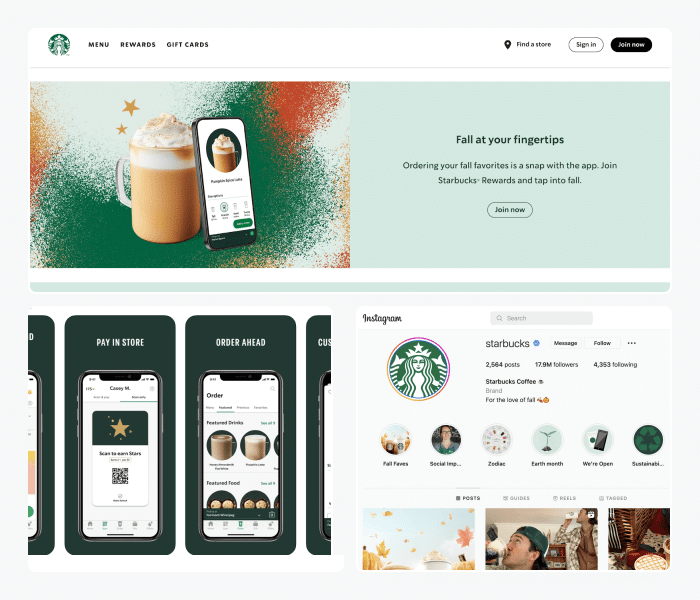
It’s an important functionality as companies with omnichannel customer engagement strategies retain 89% of their customers, compared to 33% for companies with weak omnichannel strategies.
Read more: Learn what omnichannel customer service is and get tips on how to implement this strategy effectively.
2. Chatbot analytics
Comprehensive analytics and reporting tools are essential for measuring the chatbot’s performance, tracking user interactions, collecting customer feedback and identifying areas for improvement. This data can provide valuable insights into user behavior, conversation flows, and the bot’s effectiveness.
This feature allows you to:
- Gain valuable insights into customer behavior and pain points
- Analyze chatbot interactions against company metrics
- Track chatbot usage patterns and other relevant information
An example of a company using this chatbot feature is Endeksa. Their customer service bot uses analytics to gather leads and analyze website visitors effectively.
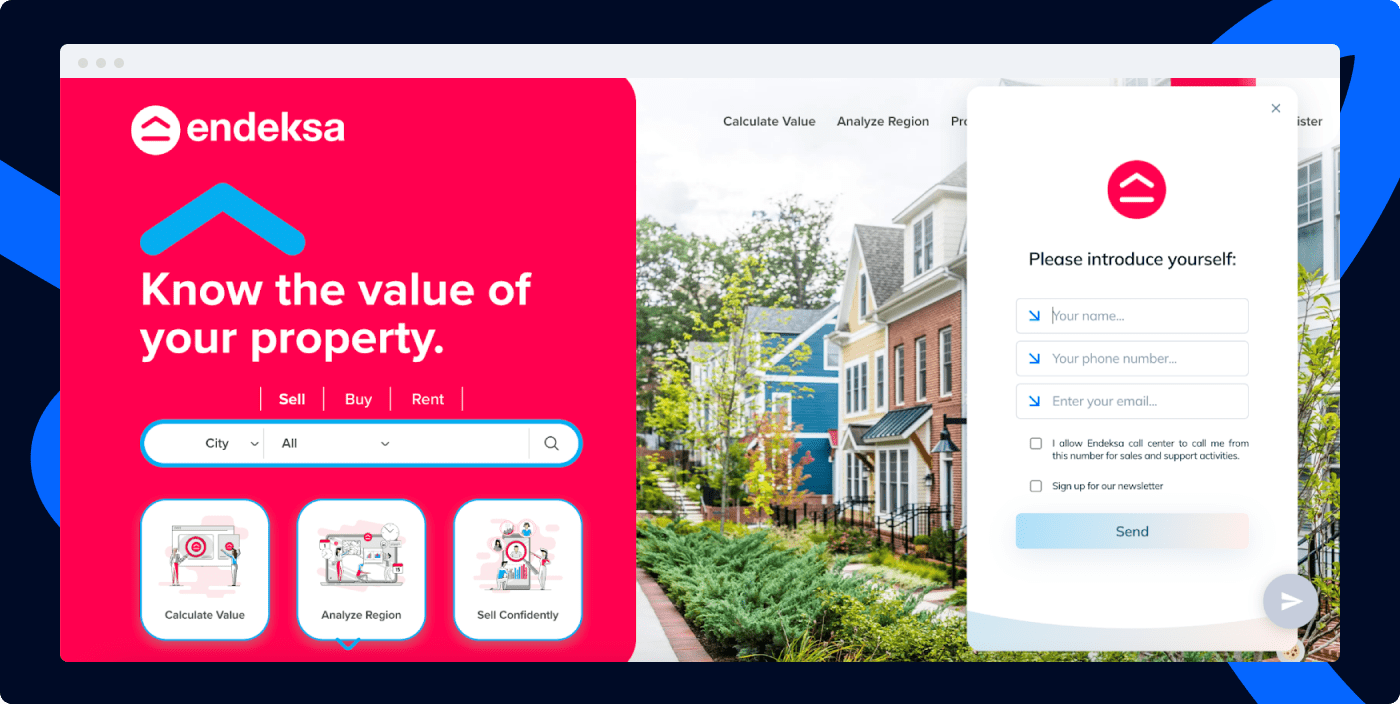
One of the key benefits of this functionality is that businesses that leverage analytics to drive better customer engagement see a 25% increase in customer retention.
Read more: Check out the key chatbot analytics and metrics your business should track.
3. Data security
Another one of the essential chatbot platform features is ensuring the security and privacy of user data. This is crucial for building trust and maintaining compliance with relevant regulations. That’s why chatbots should implement robust data encryption, access controls, and follow security protocols to protect sensitive information.
This feature allows you to:
- Protect sensitive information exchanged through chatbots for appointment scheduling, medication reminders, or symptom triage
- Ensure the security of financial data and transactions conducted through chatbots for banking, insurance, or investment services
- Safeguard customer payment and personal information during chatbot-assisted purchases or returns
A good example of this feature is Bank of America’s chatbot, Erica, that employs robust data security measures. These include encryption and authentication protocols, to safeguard customers’ sensitive financial information during the interactions.
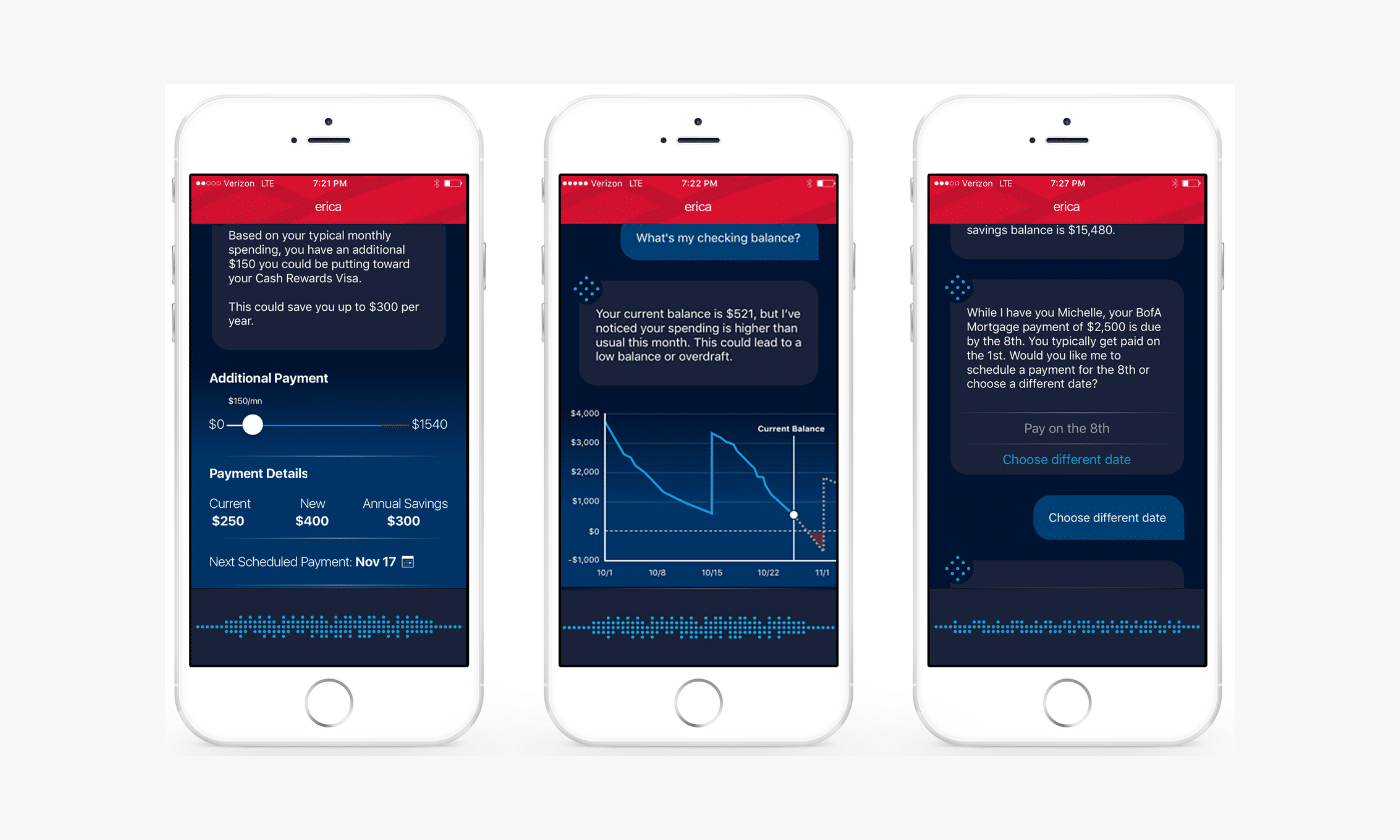
This is especially important as 83% of consumers say they won’t do business with a company if they have concerns about the company’s security practices.
4. Multilingual capabilities
This chatbot functionality lets your business expand reach and cater to a global customer base by enabling communication in multiple languages, providing a localized and inclusive experience. This will help you create more natural interactions and boost the satisfaction of your customers.
This feature allows you to:
- Provide support and assistance in multiple languages to cater to customers from different regions and cultures
- Enable travelers to communicate with chatbots in their native language for booking, navigation, and local recommendations
- Allow customers to browse products, make purchases, and get support in their preferred language for a localized shopping experience
Let’s take Airbnb’s chatbot as an example. It supports multiple languages, enabling travelers from around the world to communicate in their preferred language when booking accommodations, asking questions, or seeking assistance.
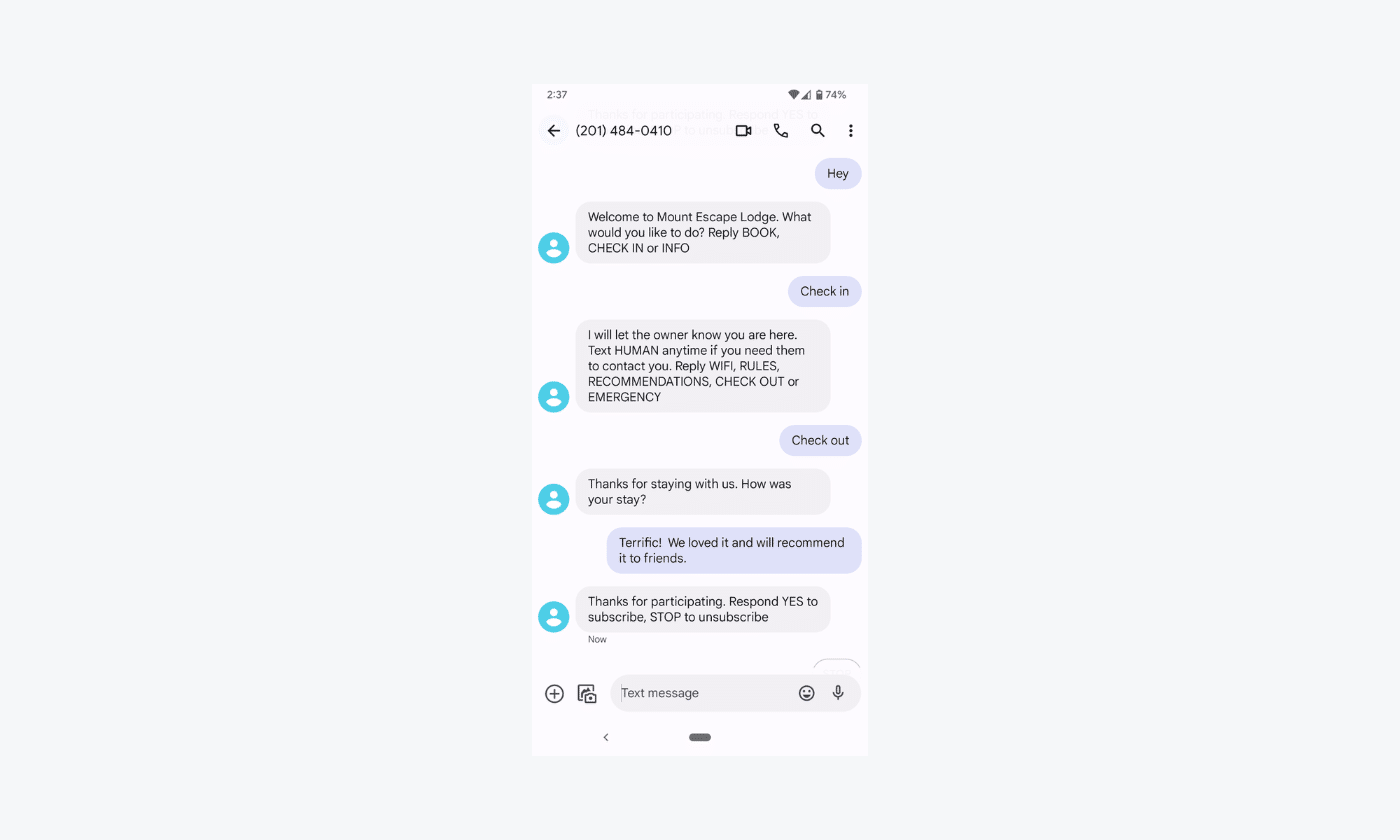
One benefit of offering multilingual chat support is the increase in conversion rates. In fact, studies show that over 76% of consumers prefer to make purchases in their native language.
5. Sentiment analysis
By analyzing the emotional tone and sentiment behind user inputs, chatbots can provide more empathetic and tailored responses. This, in turn, improves the overall user experience and increases customer satisfaction.
This feature allows you to:
- Detect customer frustration or dissatisfaction and escalate conversations to live agent
- Analyze sentiment around brand mentions, products, or campaigns to gauge public opinion and respond accordingly
- Identify employee sentiment and engagement levels through internal conversational AI interactions for proactive support and retention strategies
Uber’s chatbot platform is a good example of this approach. It leverages sentiment analysis to detect frustrations in customer interactions, escalate potential issues to human agents and provide personalized support.
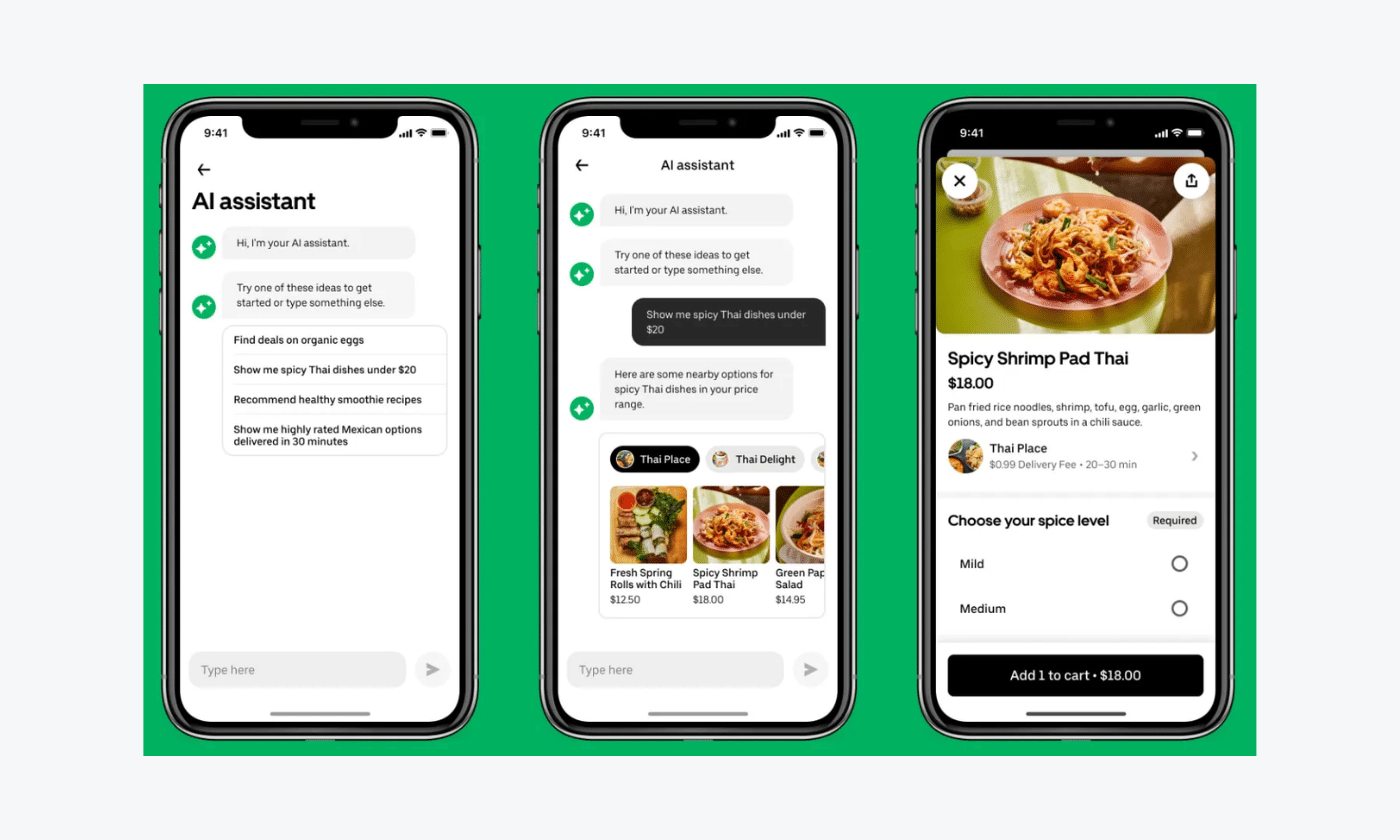
Interestingly, artificial neural networks reach an 85% accuracy rate in sentiment identification and studies show that offering recommendations based on the sentiments of past experiences boosts customer satisfaction by 90%.
6. Extensive integrations
It’s important to integrate your chatbots with other systems, such as customer relationship management (CRM) platforms, knowledge bases, and chatbot APIs. This can provide more comprehensive and personalized assistance by leveraging data collection from multiple sources.
This feature allows you to:
- Integrate chatbots with CRM systems to provide sales teams with customer data, lead information, and personalized insights
- Connect chatbots with inventory management systems, logistics platforms, and supplier databases for efficient order tracking and fulfillment
- Merge chatbots with employee databases, performance management tools, and learning management systems for streamlined HR support
For example, Salesforce’s Einstein Bot integrates seamlessly with the company’s CRM platform. This allows sales teams to access customer data, lead information, and personalized insights directly through the chatbot.
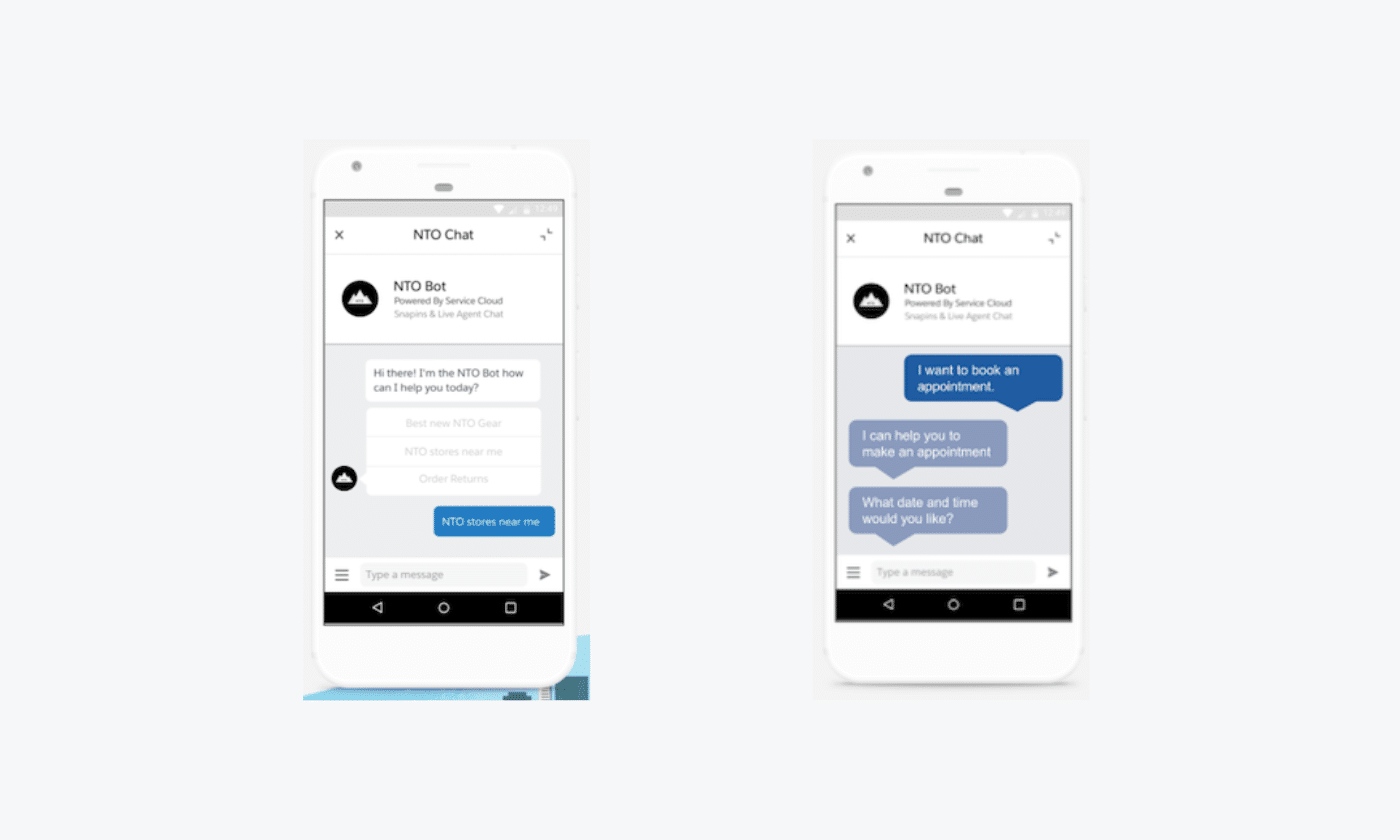
And study shows that companies with integrated customer engagement channels retain 89% of their customers, compared to 33% for those with disjointed channels.
Read more: Discover Tidio’s integrations and connect all of your systems together.
Seamlessly integrate all of your platforms
7. Live chat handover
In complex situations or when human intervention is required, a seamless handover from the chatbot to a live human agent is essential. This can enhance the user experience and ensure that issues are resolved effectively.
This feature allows you to:
- Seamless routing of complex technical issues from the chatbot to human experts
- Hand over high-value or complex financial planning conversations
- Transfer legal inquiries or case-specific discussions or professional legal counsel
One example of this is Amazon’s customer service chatbot. It seamlessly transfers complex customer queries or technical issues to human agents, providing a smooth transition for customers to receive specialized support when needed.
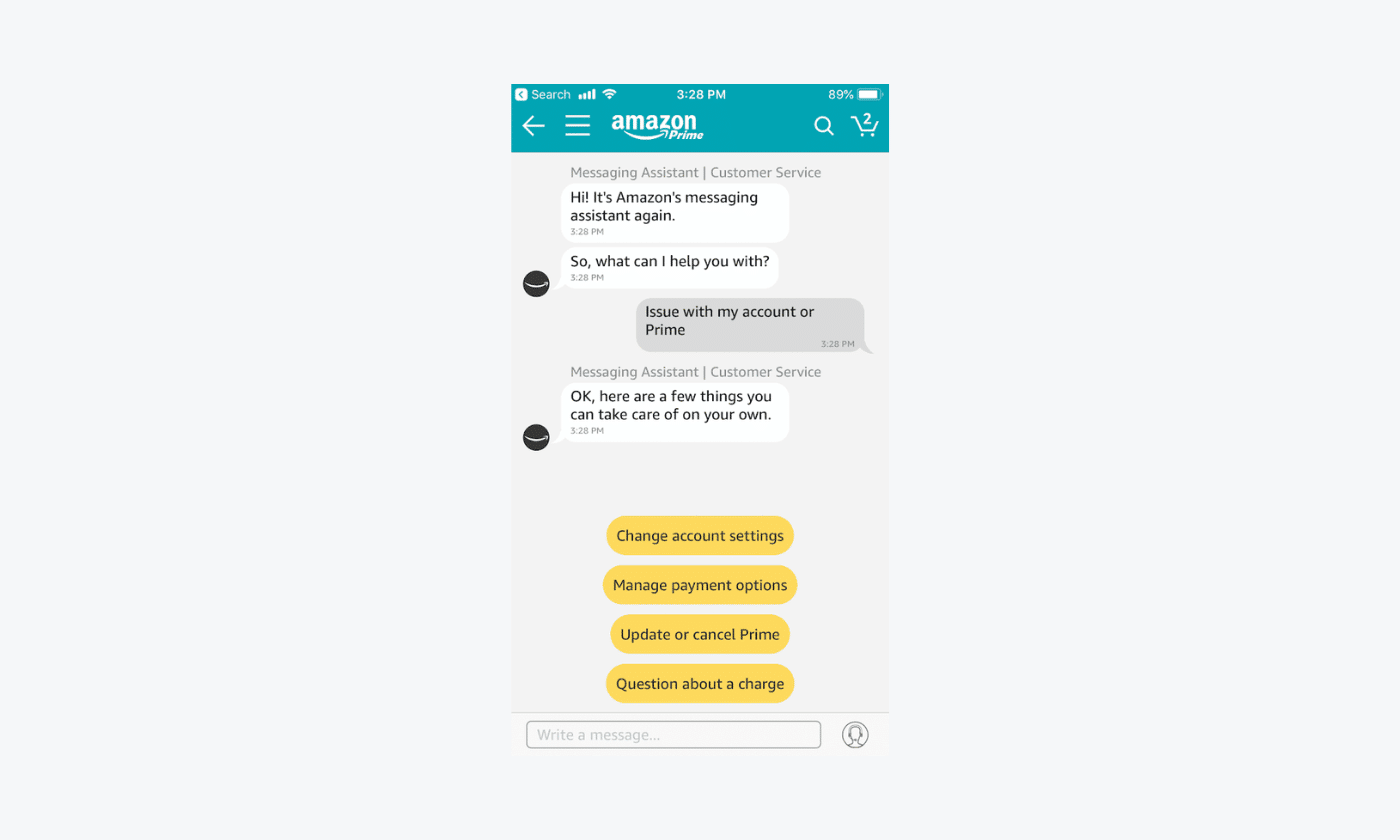
You should keep this feature in mind, as a Forrester study shows that 57% of customers abandon purchases if they can’t get their questions answered quickly.
Read more: Learn the essential difference between chatbots and live chat solutions.
8. Emotional intelligence
Another one of the key features of a chatbot is exhibiting emotional intelligence. This allows chatbots to better understand and respond to the emotional states and customer needs. This feature helps to provide a more empathetic and meaningful conversations between your business and the customers.
This feature allows you to:
- Recognize and respond appropriately to customer frustrations, anger, or other emotional states during service interactions
- Provide empathetic and tailored responses to individuals seeking emotional support or mental health resources
- Foster stronger customer relationships and loyalty by providing personalized, human-like support tailored to individual emotional needs
Talkspace, a mental health app, is the perfect example of this. The bot provides empathetic and tailored support, recognizing and responding appropriately to users’ emotional states and needs.
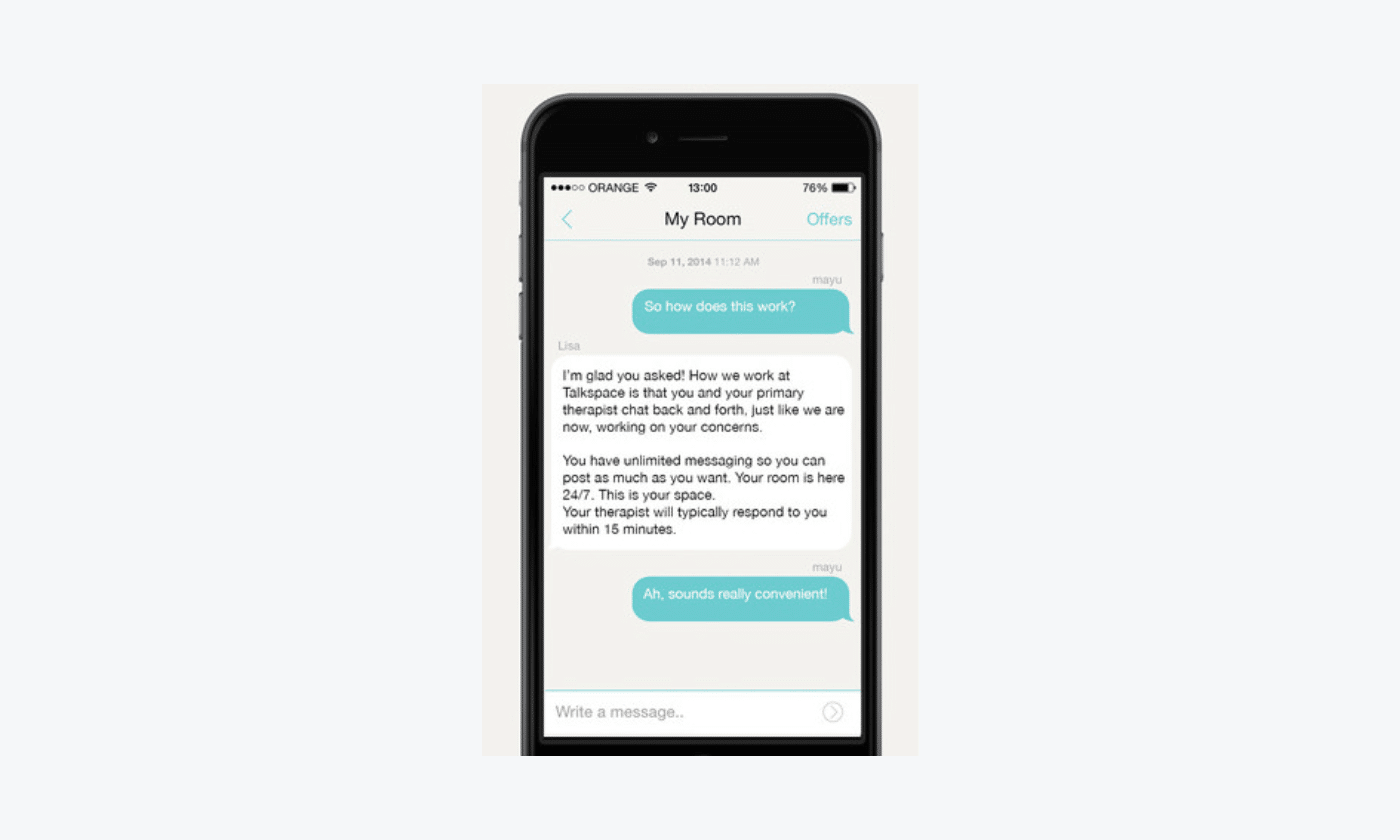
And with about 57% of customers satisfied with their interactions with an emotionally intelligent chatbot, your business will benefit from implementing this approach in your strategy.
9. Chatbot widget customization
The ability to customize the widget or no-code interface is one of the most important chatbot builder features. This will help you to match your bot’s appearance with the brand’s visual identity. Coordinating the widget with your company’s visuals can enhance brand recognition and create a more cohesive user experience.
This feature allows you to:
- Customize the chatbot’s interface using a drag-and-drop interface to match the brand’s visual identity
- Seamlessly integrate the bot with the website or app’s design
- Create a consistent experience for internal communications
For example, Sephora’s chatbot widget is fully customized to match the brand’s visual identity and user experience. This helps the brand to create a cohesive and on-brand shopping experience for customers.
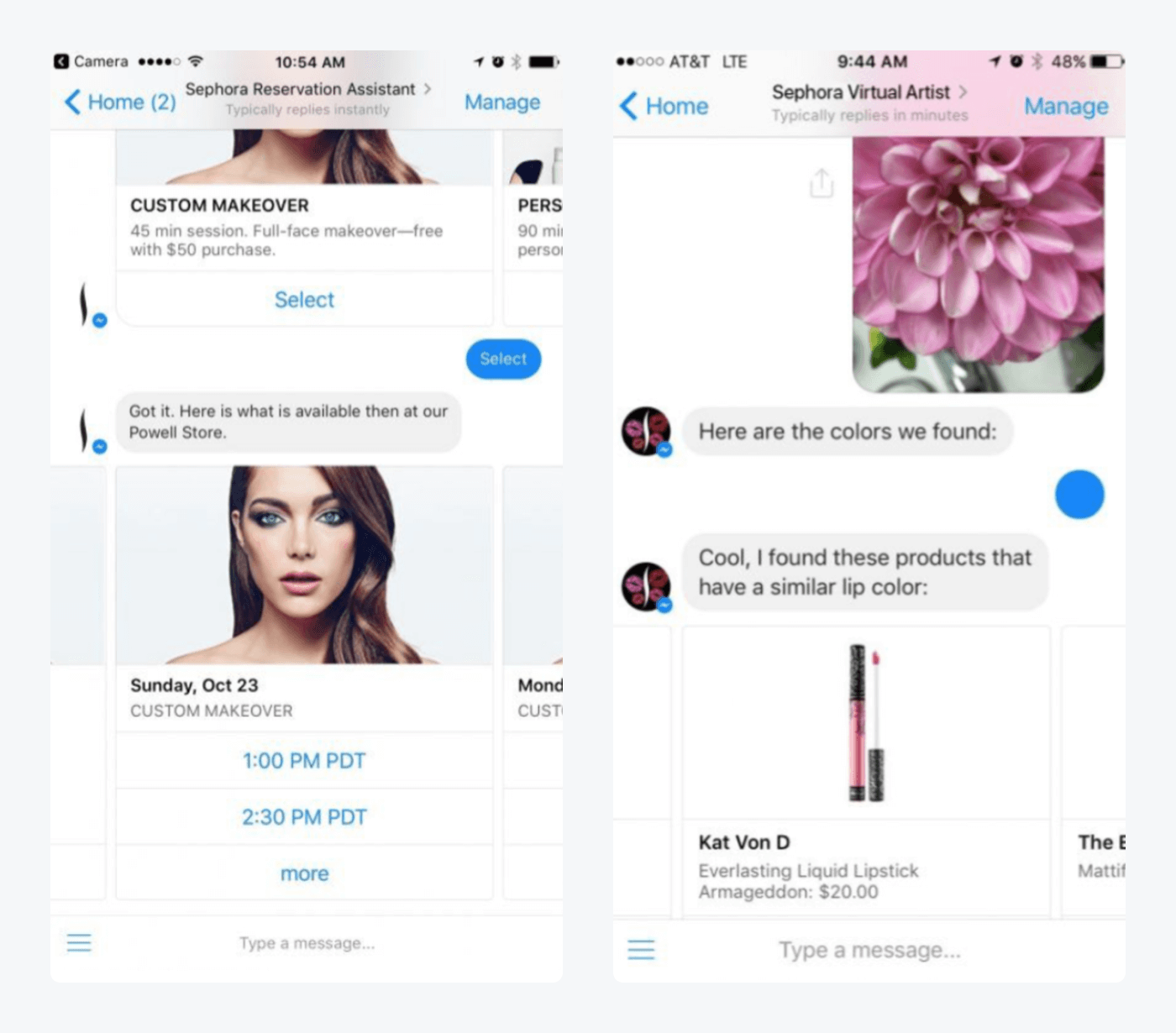
And since studies show that consistent brand presentation across all touchpoints can increase revenue by up to 23%, it’s important to implement it in your brand.
10. Natural language processing (NLP)
This is one of the advanced chatbot features. NLP capabilities enable AI-powered chatbots to understand and interpret human language, including context and intent analysis. This allows for more natural and effective chatbot conversations with users while reducing possible friction.
This feature allows you to:
- Understand and respond accurately to customer inquiries, requests, and complaints expressed in natural language
- Interpret and execute commands for smart home devices, personal assistants, or workplace productivity tools
- Analyze insights from unstructured data sources, such as customer reviews, social media posts, or survey responses
A real-life example of this is Apple’s Siri virtual assistant. This software uses advanced NLP capabilities to accurately interpret and respond to voice commands and natural language inputs, enabling intuitive hands-free interactions.

One of the benefits of NLP-powered chatbots is that they can handle most of your customer questions in a human-like manner. In fact, an IBM study shows that these bots can handle up to 80% of routine customer support inquiries, reducing operational costs.
In summary, these functionalities empower businesses to deliver exceptional customer experiences, improve operational efficiency, gain valuable insights, and expand their reach. They represent just a few examples of how businesses across various industries can leverage AI chatbot features to enhance customer experiences, streamline operations, and gain valuable insights.
Chatbot features: key takeaways
In conclusion, chatbots have become an essential tool for businesses seeking to enhance customer engagement, streamline operations, and drive growth.
Here is a chatbot features list:
- Omnichannel capabilities
- Chatbot analytics
- Data security
- Multilingual support
- Sentiment analysis
- Extensive integrations
- Live chat handover
- Emotional intelligence
- Widget customization
- Natural language processing
By implementing these features, businesses can create more intuitive, personalized, and effective customer interactions across various touchpoints. As artificial intelligence (AI) and conversational technologies continue to evolve, brands that leverage these sophisticated chatbot features will be well-positioned to meet the growing expectations of their customers.
Benefit from the extensive chatbot features
FAQs
The top features a chatbot should have include omnichannel capabilities, analytics, data security, multilingual capabilities, and extensive integrations.
Chatbot feature is a distinctive attribute or notable aspect that sets the bot apart. You can think of it as a unique quality, characteristic, or special element that defines or distinguishes the usability of the tool.
The three core functions of a chatbot include natural language processing, sentiment analysis, and omnichannel support.
The top three features among AI chatbots are natural language processing capabilities, emotional intelligence, and sentiment analysis.
To make a chatbot more interactive you should use technologies such as AI and machine learning. These systems ensure the bot offers human-like interactions.

